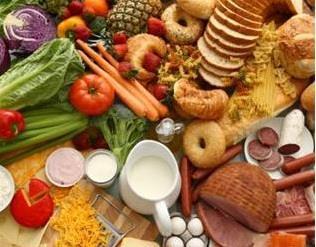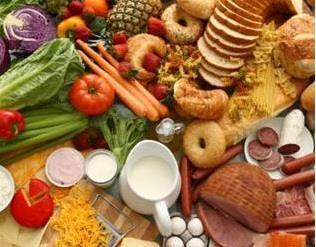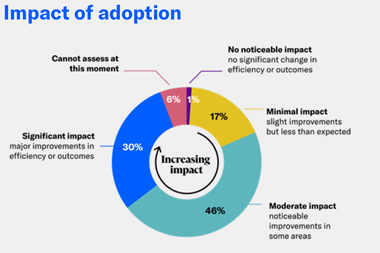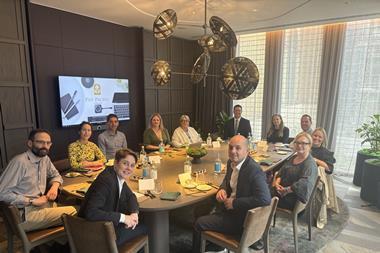It falls to risk managers to ensure our sources of food and drink are kept safe and secure
It is the stuff of life itself, so the food and drink sector finds itself with an almost unique risk profile. On the one hand, we all need to eat and drink and that doesn’t look like changing any time soon, giving businesses a guaranteed market.
But in no way does that make the sector ‘easy street’. Competition is brutal, legislation labyrinthine and customers’ and regulators’ expectations sky high in terms of standards and quality.
Overall, business is booming. Food and drink remains the largest manufacturing sector in the EU in terms of turnover (€1,017bn), according to research by FoodDrinkEurope. Despite the economic downturn, the sector body’s analysis shows that food and drink manufacturers have sustained positive growth in the EU, easily outperforming most other manufacturing sectors.
The sector is also a huge employer. The number of people working in food and drink across the EU reached 4.25 million in 2011.
But, for individual firms at least, there are no certainties. You only have to look back to spring 2013 and the horsemeat scandal to see just how quickly public confidence can be rocked when firms lose track of their supply chains.
Events began to spiral out of control in January when horse DNA was found in a series of frozen beefburgers on sale in British and Irish supermarkets. Public outrage prompted retailers and manufacturers to undertake more and more tests, which revealed more and more contamination.
The resulting scandal spread and spread, resulting in empty shelves across the EU as products were withdrawn in 15 countries – and all this despite there being no risk to human health from horsemeat.
More than anything, the contamination scare revealed a critical breakdown of traceability in the food supply chain, and raised the possibility that other more dangerous elements could have been present – for example, veterinary drug phenylbutazone found in meat from illegally slaughtered horses.
Risk transfer
The scandal illustrates how tough the sector is and that clients, insurers and their brokers need to be forward-looking and rigorously analytical in their approach to risk transfer.
“The food industry risk landscape is changing, but most clients still like to start their renewal strategy meeting with a review of the property damage and business interruption/machinery breakdown risks,” says JLT major risks practice partner Simon Lusher.
“That’s probably not going to change soon, although more sophisticated risk management techniques and modernisation of production facilities should align the food industry risk profile more closely with the risk appetite of the wider insurance industry, providing more choice, capacity and coverage.”
He believes that many of the major risks discussed are often fairly obvious. Given the massive distances travelled by products via sea, air, road and rail, cargo insurance remains a key risk for exporters (and importers), whether standalone or a combined stock throughput, and global trade will continue to be supported by credit insurance.
“Traditional property and liability exposures associated with the manufacturing, storage and transportation of goods remain the main insurable risks in this sector as far as I’m concerned,” says John Keating, head of insurance and risk management at Sainsbury’s.
But Lusher argues that while product liability remains crucial, product recall – in the form of contaminated products insurance – has emerged as a serious consideration for any risk manager. “The growing importance of contaminated products insurance has been a key trend over the past few years,” he says. “Ironically, a lot of positive publicity for this product was generated by the horsemeat scandal, despite the fact that the policy recall trigger would not have been activated under the specific circumstances of this event.
“The regulatory environment has also been a driver in promoting interest in contaminated products insurance, and we are seeing recall stipulations in supply contracts.
Keating agrees. “Product recall insurance, which provides first-party cover in the event of risks associated with contamination, tampering, mis-labelling and so on, has been subject to some comment over the past 12 months with events in the UK,” he says. “This form of insurance has also received a lot of attention internationally in recent years.”
US focus
In the US, the Food Safety Modernization Act of 2010, signed into law by President Obama on 4 January 2011, aims to ensure the US food supply is safe by shifting the focus of federal regulators from responding to contamination to preventing it.
“The Food Safety Modernization Act has given the Food and Drug Administration a number of new powers, including mandatory recall authority,” says Keating. “The Act really led to a convergence of the situation in the US and EU. The US, if anything, was just catching up with the situation already in place in the EU.
“Having said that, it’s important to understand that the way product recalls take place in both continents can be quite different.
“In the EU, the emphasis and expectation tends to be recall on a voluntary basis. The US might be more prescriptive, with possibly more emphasis on mandatory recall.”
Voluntary recall tends to be more common in the EU, he continues. “This works because if firms don’t recall a product, they face very real reputational damage. You only have to look back at some of the big incidences, such as Perrier water – textbook examples of how to get the message out to alert the public, reassure them that all appropriate measures are being taken to resolve a problem and immediately start rebuilding the brand.” Insurers have responded to the changing situation by adapting their offerings. “To give insurers due credit, it’s a better product than it was,” says Lusher. “The policy wording is now a lot more sophisticated – government recall and adverse publicity endorsements offer value and address key concerns at board level.
“The crisis management support and advice provided under the policy are also hugely beneficial. There must be enough independent evidence across the industry to support this assertion as I’m not seeing the concerns and suspicions about this service that I have in the past.”
Food fraud
Another related, if still emerging, aspect of risk is food fraud. Lawmakers across the US and EU are seeing more and more examples of complex international supply chains providing cover for criminals to pass off lower quality products as more expensive items. In December 2013 and January 2014, a joint operation by Interpol and Europol across 33 countries seized 1,200 tons of counterfeit food and 430,000 litres of counterfeit drink.
This involves the potential for reputational damage – if, for example, olive oil were found to be adulterated with cheaper oil. But it points to serious risks too. Illegal vodka and other spirits may contain dangerous levels of methanol and other chemicals, causing nausea, blindness and even death.
“It will be interesting to see how the food and insurance industries respond to recalls instigated by bona fide companies as a result of defective – and dangerous – branded products that turn out to be counterfeit,” says Lusher.
Another area in which recent events have sparked a steep learning curve for clients and insurers is supply chain management.
From the Icelandic ash cloud to the Japanese tsumani, from extreme weather events to political disruption in major agricultural areas, food and drink manufacturers have, like many sectors, become more and more aware of their vulnerabilities and exposure to instability.
“Supply chains have grown into supply networks, and marine cargo insurance is not necessarily adequate to protect against the risks involved in global transits,” says Lusher.
“We’re seeing more interest in trade disruption insurance and other non-damage/intangible business interruption solutions, and I think that trend will continue.”
Exposure to terrorism
Food and drink manufacturers can also become targets for those with a political point to make. Contamination by animal rights groups has been a risk for several decades, and militant Islam is a developing threat.
“Although terrorism is not an emerging risk, with complex supply chains and the current social economic global environment, an act of food terrorism – deliberate contamination somewhere in the food chain – has become more likely, especially as heightened security has made acts of physical violence harder,” says Keating.
“With terrorism and a general sense of exposure of products and supply chains to tampering, it could be argued that chemical or biological attack on product supply chains is an emerging threat.”
Acts of chemical or biological attack are excluded from most terrorism covers and expanding cover to include chemical and biological acts is relatively expensive.
“The ability and sophistication of the security services to detect and respond to threats to food security is continually developing and does inspire confidence as a risk management measure.”
“In order to be effective, relatively significant and detectable amounts of a chemical or biological agent would most likely be needed to be effective. There will always be other targets that [seem] more efficient – such as the ricin attack on the subway in Japan.
“Even so, if a food company has been deemed negligent in failing to prevent a terrorist act, there could be an exposure. So food producers should ensure they can demonstrate appropriate controls and safeguards over their production and distribution systems – and that their policies do not specifically exclude this risk.”
Emerging risks
New risks are going to emerge – and from some interesting directions. “Environmental liability has emerged over the past few years on the back of increased regulation and massive public concern,” says Lusher. “The insurance industry has responded well to the new regulatory exposures and is becoming less niche than it was.
“Genetic modification is already with us but will become mainstream in an environment of global population expansion and climate change. Alternative protein sources – following on from the world’s first lab-grown burger developed by scientists at Maastricht University in 2013 – plus new artificial ingredients and increasing technological innovation in production techniques will all alter the risk landscape for food producers.
“The insurance industry should be able to cope well with these changes, as the risk profile will be similar to the life sciences/pharmaceutical risks already written by the major insurers.”
Other environmental issues may prove harder to address and mitigate. “Long-term sustainability – balancing the threat of climate change with the demand for cash crops and biofuels – is putting a lot of demand on available land,” says Lusher. “At the same time, consumers are more environmentally aware than ever before.
“This is a balancing act for food companies, who have to deliver affordable food and secure their supply lines while maintaining public acceptability through responsible suppliers and environmentally sound production processes throughout the supply chain.
“Any adverse publicity from within that supply chain – such as deforestation, child labour or redirected water supplies – may translate into brand damage, even when the events are beyond the control of the manufacturer.”
He continues: “In an age of social media, reputational risk has never been more fragile, and companies must ensure they manage their exposures by being fully aware of their supply routes.”
Elsewhere, food and drink manufacturers face more and more intangible risks as they increasingly rely on websites, online sales and promotion, networked stock and production systems.
“Cyber liability, cyber extortion, loss of data, intellectual property and so on are all now insurable and should be insured as the potential damage to a company’s balance sheet through data breach and cyber-attack could be enormous,” says Lusher.
Health watch
There is one emerging area of risk that is unique to the food and drink sector. In the 21st century, our relationship with these products has become increasingly complex. While we are generally better fed than we have ever been, there are emerging health concerns linked to high-fat and high-sugar products, as well as brands of high-strength alcohol.
The European Commission estimate that 50% of Europeans are now overweight – and 20% obese – and these figures are projected to grow along with associated health problems.
“I’m not the only one to speculate whether there will an increase in product liability claims resulting from maladies such as obesity, alcoholism and diabetes,” says Lusher.
Companies are increasingly seen as liable for any ill effects from the products they manufacture and for educating consumers on responsible use.
“Healthy eating has a high profile, but the debate as to whether the consumer or the manufacturer is responsible for the consumption of too much sugar, salt or fat is ongoing,” says Lusher.
“Whether labelling and recommended daily amounts are sufficient to pass that responsibility to the consumer is yet to be settled. How the public liability policies will respond in future will be interesting to see.”




















No comments yet